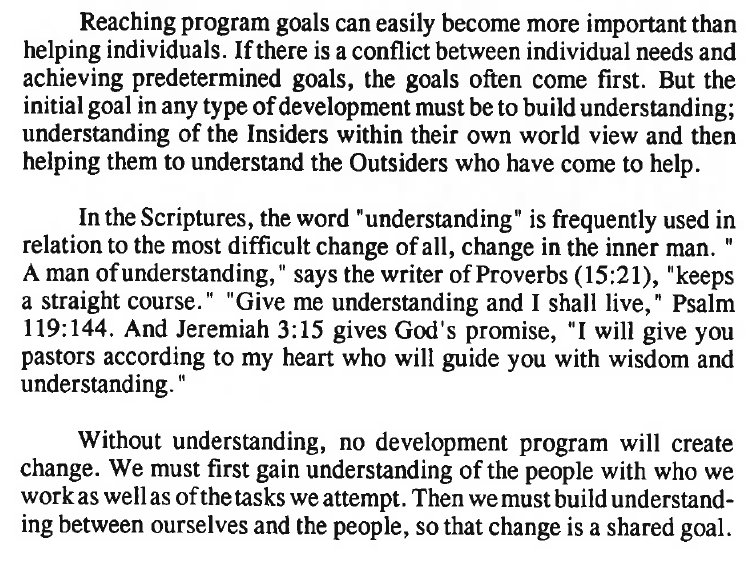In his book Make Haste Slowly, Dr. Donald K. Smith addresses issues that are relevant for those of us trying to “introduce fundamental change into another society.” Below I make a few comments.
Training objectives

Cotton and training objectives
The above situation is a great illustration for establishing objectives that deal with feelings. In this case, the feelings of resentment were so strong that they trumped all other reasonable objectives. These objectives can fall under “be” in the “know, be, do” categories, but it is only the insightful course writer who will translate “be” into “feeling of resentment.” I have found “be” to be less than ideal as a guide for novice writers.
This is why I appreciate the way that Horton has set up his objectives in E-Learning by Design.
The ultimate (primary) objectives are stated as what the learner will “do, decide, or create” as a result of the training.
He does not ignore the need for “know” and “be” but clarifies those by stating these as “know, believe, feel” issues that may need to be addressed in order to accomplish the primary objectives of “do, decide, create.”
In the example of cotton in the paragraph above, in order to “train” the Sudanese to grow cotton, really the only input training that they needed was to address the feeling issue. They already know how to grow and harvest cotton. They already believed that it would benefit them.
The primary objective then is to have them decide to grow cotton. We don’t need to add a “do” objective because once they decide to do it, they can get right to it because they already have the skills. It is that decision thing that is in their way. And the only thing blocking them from getting there is their feelings of resentment, which are perfectly legitimate feelings, by the way.
Non-transferable training
Because the situation of the Sudanese is so specific to them and their feelings, generalized training from another similar area would not be effective in dealing with their feelings.
Any “training” that would be developed would have to be specific to their situation. You could not bring in training that was developed over in Uganya and expect it to be effective in Sudan. It would have to be a lot of dialog, lots of discussions, lots of relationship because the feelings run deep and are specific to their daily lives over a long period.
The following paragraph emphasizes this point.

While the emphasis here is on people, I am taking that a step further and suggesting that training is not transferrable because it elevates the priorities to efficiency and technology or the content over people.
Smith goes on to say…

Action Reflection Action (ARA)
I see much of the ARA way in these few short paragraphs, especially the effort and time spent to understand the situation and learners. ARA has put hands and feet on these ideas by providing a method on how to achieve the lofty goal of understanding.


Comments
Send a Reply